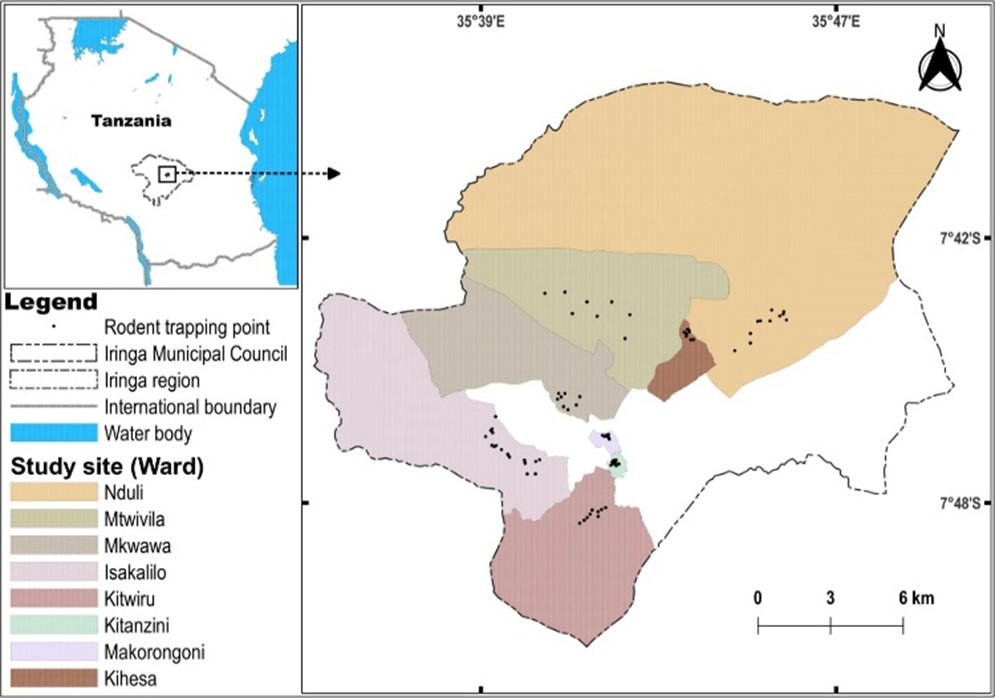Occurrence and antimicrobial resistance pattern of Escherichia coli and Salmonella species isolated from domestic and peridomestic rodents
Authors: Jackson C. Mkopi, James Mushi, Alexanda Mzula
Ger. J. Microbiol.
2024.
vol. 4, Iss. 2
pp:15-28
Doi: https://doi.org/10.51585/gjm.2024.2.0034

Abstract:
E. coli and Salmonella species are bacterial pathogens contributing to opportunistic infections, food poisoning, and urinary tract infections. Recently, research has shown that pathogens have repeatedly been found in rodents. Environmental interaction between human, livestock, and rodents is possibly disseminating these bacteria and their antimicrobial resistance. Therefore, this study aimed to determine the prevalence and antimicrobial resistance patterns of E. coli and Salmonella spp. isolated from domestic and peri-domestic rodents in Iringa municipality, Tanzania. A total of 153 rodents were captured from January to March 2023 and clarified at the species level using identification keys. Rectal swabs were collected. E. coli and Salmonella spp. were isolated by culture methods and identified by biochemical tests and conventional PCR. The antimicrobial susceptibility test was done by disk diffusion method using five antimicrobials, including tetracycline, ciprofloxacin, gentamicin, ceftriaxone, and trimethoprim-sulfamethoxazole. Seven resistant genes were tested by PCR, which were blaCTX-M, blaSHV, sul1, sul2, tetA, acrA, and aac(3)-1. Three rodent species, Rattus rattus (75.2%), Mastomys natalensis (23.5%), and Mus musculus (1.3%), were captured. 17 (11.1%) E. coli were detected, and no Salmonella spp. were isolated. All 17 isolates were susceptible to gentamycin and resistant to sulphamethoxazole/trimethoprim (52.9%). Four E. coli isolates exhibited multidrug resistance (MDR), whereby 75% of these MDR isolates originated from the same area. Six resistant genes were detected: blaCTX-M, sul1, sul2, tetA, acrA, and aac(3)-1, where the acr(A) resistant gene was the most abundant. There were co-occurrences of the resistant genes per isolate, such as sul2, acrA, and aac(3)-1. This study reveals the antimicrobial resistance of E. coli isolated from rodents, providing preliminary data on the prevalence and antimicrobial resistant features of these pathogens in their respective reservoirs in Iringa municipality. The study recommends observing regular antimicrobial resistance screening and improving rodent management and control programs in the studied area.
Keywords:
Rodent, E. coli, Salmonella, Antimicrobial-resistance, Resistance gene, MDR
Statistics:
Article Views: 943
PDF Download: 27